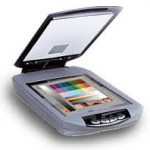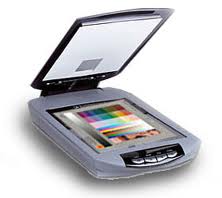 This is another one of those questions I get asked about a lot. It’s usually not a direct question though. It usually comes up when I mention to one of my clients that I need to scan this or that document to my server. I also tell them that I prefer email to faxes because emails can be directly stored on the server without being scanned. I then get a sort of puzzled look, like they would like to ask a question but they’re not quite sure what to say.
This is another one of those questions I get asked about a lot. It’s usually not a direct question though. It usually comes up when I mention to one of my clients that I need to scan this or that document to my server. I also tell them that I prefer email to faxes because emails can be directly stored on the server without being scanned. I then get a sort of puzzled look, like they would like to ask a question but they’re not quite sure what to say.
I proceed to explain that a few years ago I went almost completely paperless in my office. I say almost because I have not yet scanned all the old stuff in my filing cabinets. However, since going paperless, there have been virtually no documents added to my files. Everything gets scanned and returned to the client. Emails get stored directly, and faxes get scanned and shredded.
After explaining this I usually get a look of awe and wonder followed by a comment that goes something like, “isn’t that really hard to do?” Or, “I thought about doing that but had no idea how.” The other day I got another one of these reactions and it got me thinking. Based on the number of these reactions, there must be a lot of people out there that would like to paperless but don’t know how.
I’ve been a CPA in my own practice for about 25 years. I’m always on the lookout for new technology that will improve efficiency. Quite a few years ago I started working on the idea of a paperless office. This was long before it was in vogue to be green and there was very little information available about it. The first technology to appear was aimed at professionals. It was quite expensive and very proprietary. It was common to pay over $10,000 for a scanner and proprietary software. This also tended to lock you into a specific vendor. You were at their mercy for upgrade charges and you prayed they would not go out of business.
Fortunately those days are over! Now it’s very simple to set up your own paperless system. It’s feasible and affordable for both businesses and individuals. There are still lots of companies out there that would like you to believe it’s expensive and impossible to set up yourself. They offer expensive document-management packages that automate the whole task. Some of these products do have their place. Some are for specialized industries or large user groups that have unique security or other needs. For those types of users, the do-it-yourself system may not be appropriate. For the rest of us though, there are some simple and inexpensive tools out there that will have you paperless in no time.
The first thing you will need is a scanner. This is especially true if you will be archiving all your existing documents. Even if you’re not archiving though, it’s still pretty difficult to get everything in electronic format in the first place. There will always be that odd scrap of paper that you don’t want to physically keep track of. What kind of scanner to get is a big question but I think I can narrow down the essentials quickly. Your will need either a flatbed or sheet-feed scanner, or one that does both. Sheet-feed will only do sheets of paper that are large enough to be fed through it. Small receipts and other miscellaneous will require a flatbed. Also make sure you match your expected usage with the duty cycle (scans per month rating) of the machine. If you have mountains of paperwork, you will need an industrial strength scanner to match. Most other features that you can choose from-and there are many-are more a matter of preference.
The only other thing you need is software. I use Adobe Acrobat Professional but there are various others available. Whatever you decide to use, make sure it saves your documents in the Adobe PDF format. Pretty much the entire world uses this format so you will always be able to share documents and you’ll never be stuck with something your computer can’t read.
Lastly, make sure your software and hardware will talk to each other. This is not as big an issue with scanners connected directly to a computer. However, if you want the scanner available to network users, you’ll need to do your homework to make sure everything will work together.
Whether you’re working on a PC or Mac, you already have a document-management system. It’s your operating system which would be Windows or Mac OS. You simply create a folder on your computer and scan your documents directly to it. You can also scan to your desktop and then save to your desired location. The beauty of this system is that it’s completely customizable and free.
In my office I have a folder on my server called “Archived Client Files.” Each client has their own subfolder and some subfolders have subfolders of their own if the client has many different document types. For example I might have folders for payroll tax reports, personal and business tax returns, electronic filing confirmations, and anything else that might need a folder. I also have folders for Firm documents like licenses and paid bills, and directories for various personal categories. This is just one of many ways it could be done. You are only limited by your imagination! So your paperless document system is simply made up of folders and subfolders somewhere on your computer or on an external storage device.
One other tip I would like to mention. If you have the space for your old paper files and you don’t have a deadline for archiving, you can choose the lazy way of going paperless. Start doing everything paperless now so no new papers gets added to your files. After you have retained each file you already have for the required period of time, just shred it. This is the method I’m using for some of my old files. I go through my files once a year and shred anything I no longer need to keep. Some files are permanent so I will end up archiving those. Another nice thing about electronic archiving is that you can keep more things that you might have otherwise tossed out because of limited physical space.
I realize this has been a basic overview of this subject and there are lots more things that could be said on this subject. If you want to know more, or have suggestions for additional post, sign up in the box on the right and leave a comment. Depending on how many requests I have, there’s a very good chance I will write a completely customized post directed at just your question.
Thanks for visiting!
